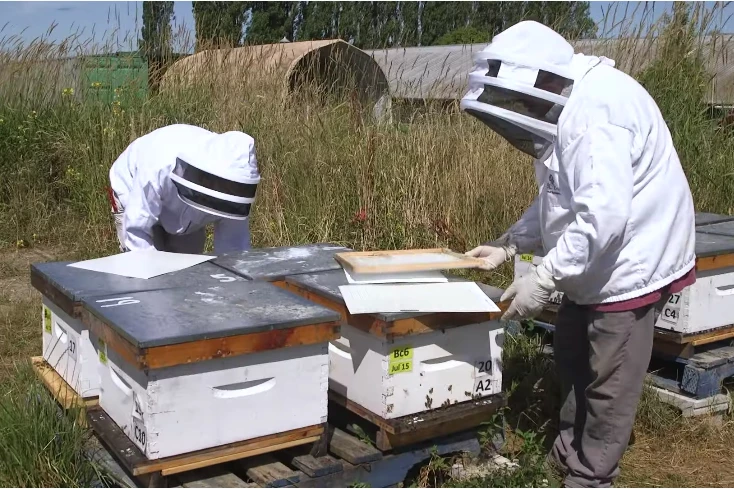It is believed that parasitic varroa mites may be one of the main causes of colony collapse disorder, which is decimating honeybee colonies around the world. There may be hope, however, as a new chemical has been found to eradicate the mites without harming the bees.
Once present in a colony, varroa mites kill and eat honeybee larvae, plus they weaken adult bees by biting chunks out of their bodies. Those weakened bees then have difficulty foraging to support the colony, plus they're more likely to become infected with viruses … which they may spread to other insects in the environment.
And while there already are some chemicals which beekeepers use to control the mites, it's possible that the mites may develop a resistance to them over time. It is therefore best to rotate between several such chemicals when treating colonies. That's where 3c36 comes in.
The compound was created by Prof. Erika Plettner at Canada's Simon Fraser University. Originally, it was designed to deter moth larvae from feeding on crops. More recently, however, it was also found to paralyze varroa mites, causing them to fall off the bees' bodies and die within several hours of exposure. The bees themselves remain unharmed.
In field trials conducted in the province of British Columbia, sticky sheets of paper were placed below open meshes in the bottom of 40 honeybee hives. Each hive was either treated with 3c36, treated with an existing anti-mite compound, or left untreated. At the end of the testing period, Plettner and colleagues removed and analyzed the sticky sheets, to see how many dead mites had fallen down onto them.

It was found that 3c36 performed on par with the other chemical, resulting in a far greater number of dead mites than were collected from the untreated colonies. Further trials are now being planned, in hopes that the compound could soon become a key component of beekeepers' arsenals.
"There is always a chance that resistance will develop," Plettner told us. "This is why any new treatment will need to become part of an integrated pest management (IPM) procedure. Such procedures mitigate the risk of resistance by requiring the use of different compounds or techniques in subsequent years."
Source: Simon Fraser University




